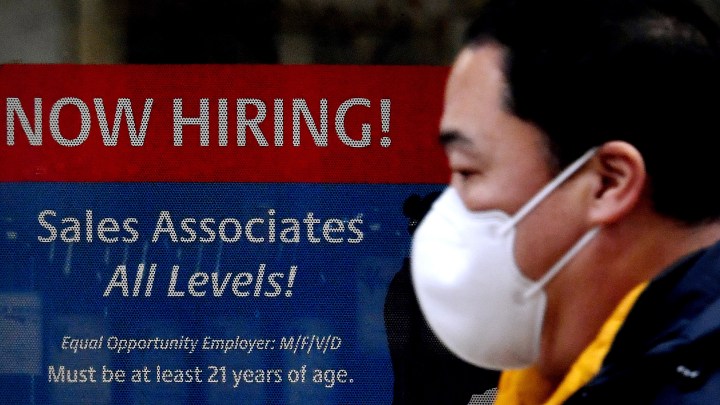
What’s stopping so many people from heading back to work? It’s not just COVID.
What’s stopping so many people from heading back to work? It’s not just COVID.

One of the main challenges facing the U.S. economy is a shortage of workers, something employers desperate to meet strong consumer demand complain about incessantly.
Unemployment is now nearly as low as it was before the pandemic, while job openings are near record-highs. Contributing to this tight labor supply: There are 2.3 million fewer people in the labor force — working, or actively looking for work — than before the pandemic.
What’s holding folks back from returning to the workforce and taking available jobs?
Disruptions to schooling and child care are still keeping people who were working before the pandemic out of the workforce now.
Chris Hossellman of Palo Alto, California, has two young kids.
“Susannah and Eleanor, they’re 4 and 6 years old. And my wife works at Google. She’s the primary worker and I’m the primary caregiver,” Hossellman said.
That’s a big change from before the pandemic, when Hossellman was a busy trial-lawyer.
“It’s a lot of hours, a lot of stress, it’s a lot on your plate. And it was similar for my wife.”
They were managing to make it work, though.
“Daycare, evening nanny, laundry service, cleaners—to allow this dual-income household to function. And of course when the pandemic hit, it all kind of came crumbling down,” Hossellman said.
Neither parent lost their job, but those support systems were disrupted. So Hossellman decided to leave his litigating job and take up the job of full-time stay-at-home dad.
“I’m certainly enjoying it,” he said.
And — with schooling and child care still in pandemic-flux — he feels no pull to go back to work any time soon.
“All of that uncertainty makes it really difficult to commit to something like that, when the employer landscape hasn’t really changed to accommodate working parents,” he said.
For some workers — the danger and insufficient returns of work are still keeping them on the sidelines.
That’s the case for Noah Dreyfuss, a 29-year-old bartender in Cleveland. He was laid off when the pandemic hit, went back to work a few months later but could only get part-time hours.
“So we were making substantially less to go in and also risk ourselves with a virus that could possibly kill us. You know I had it early on and it has still impacted my lungs,” he said.
Health problems kept him out-of-work part of last year. Then he started looking for bartending jobs again. But the reality was very different from before the pandemic.
“I’ve had the interviews and they’ve gone great. But then they’re also saying, ‘We’re only open from 3 p.m. until 9 p.m. Thursday through Saturday.’ That’s not a realistic option. And that’s also not going to put anyone above the poverty line,” he said.
He’s still got some savings, and said he won’t take work that pays less than half of what he made pouring drinks before COVID hit.
There’s a lot happening in the world. Through it all, Marketplace is here for you.
You rely on Marketplace to break down the world’s events and tell you how it affects you in a fact-based, approachable way. We rely on your financial support to keep making that possible.
Your donation today powers the independent journalism that you rely on. For just $5/month, you can help sustain Marketplace so we can keep reporting on the things that matter to you.










